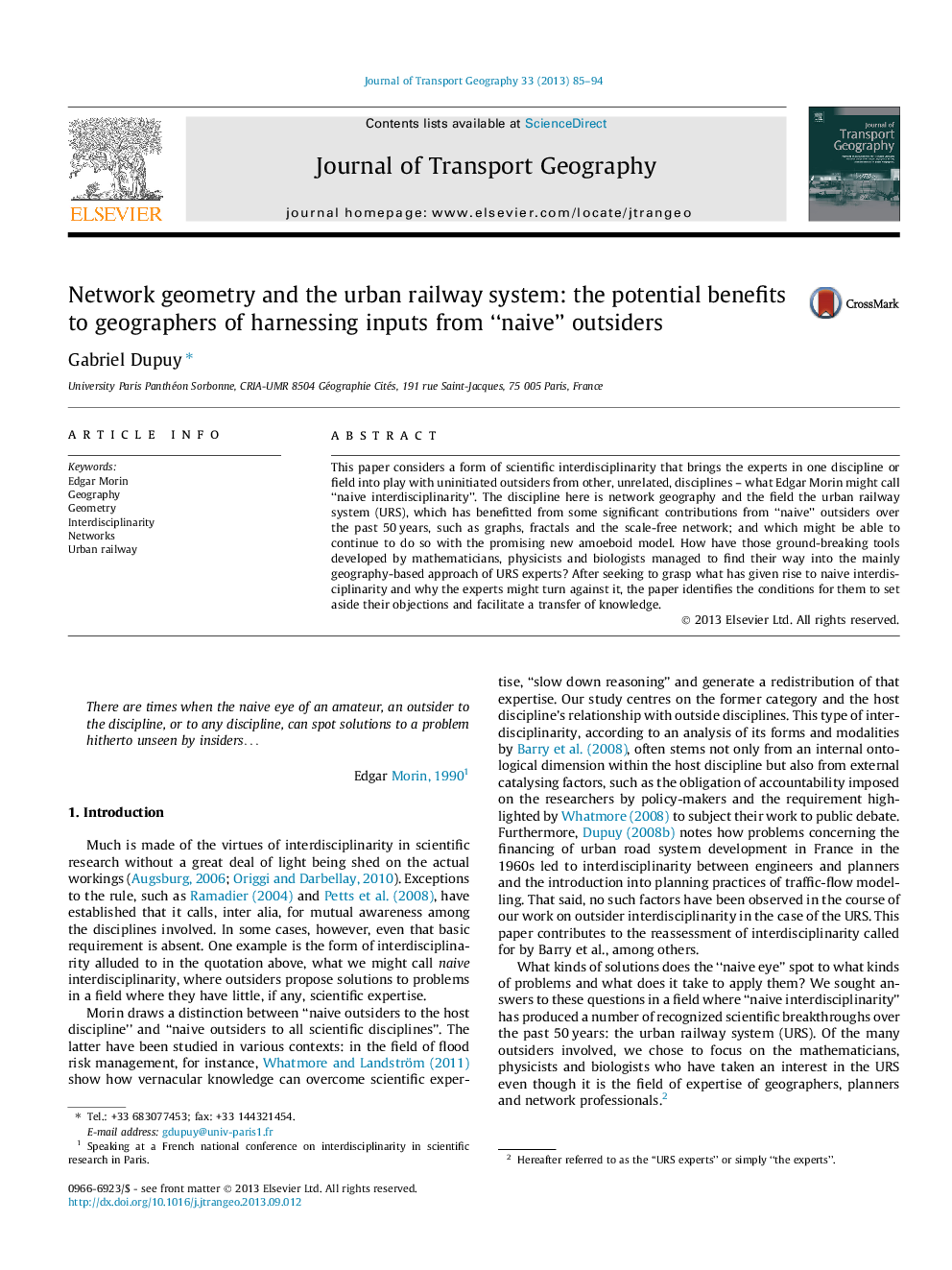| Article ID | Journal | Published Year | Pages | File Type |
|---|---|---|---|---|
| 1059113 | Journal of Transport Geography | 2013 | 10 Pages |
•The “naivety” of hard scientists has generated new models to explain the geometry of urban railway systems.•Experts, especially geographers, have not always been receptive to models presented by “naive” amateurs.•The experts could open up to and harness the benefits of “naive interdisciplinarity”.
This paper considers a form of scientific interdisciplinarity that brings the experts in one discipline or field into play with uninitiated outsiders from other, unrelated, disciplines – what Edgar Morin might call “naive interdisciplinarity”. The discipline here is network geography and the field the urban railway system (URS), which has benefitted from some significant contributions from “naive” outsiders over the past 50 years, such as graphs, fractals and the scale-free network; and which might be able to continue to do so with the promising new amoeboid model. How have those ground-breaking tools developed by mathematicians, physicists and biologists managed to find their way into the mainly geography-based approach of URS experts? After seeking to grasp what has given rise to naive interdisciplinarity and why the experts might turn against it, the paper identifies the conditions for them to set aside their objections and facilitate a transfer of knowledge.
